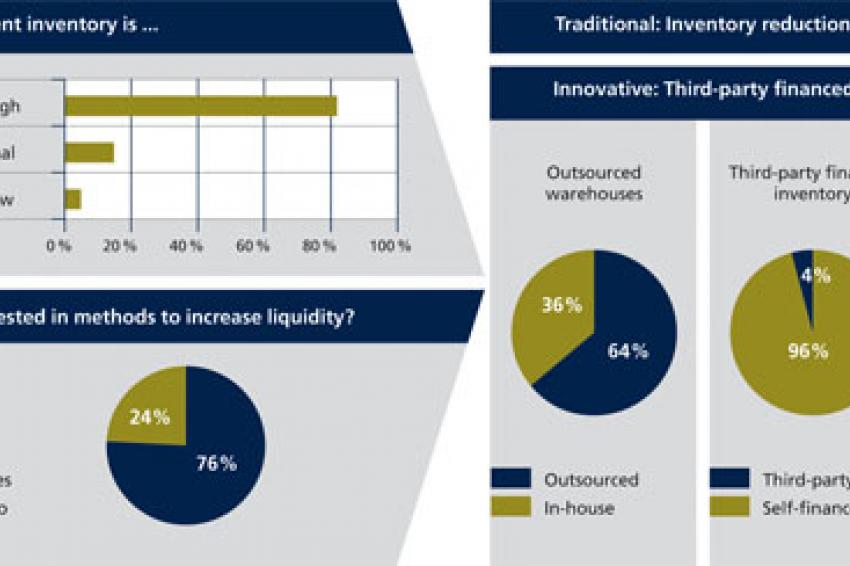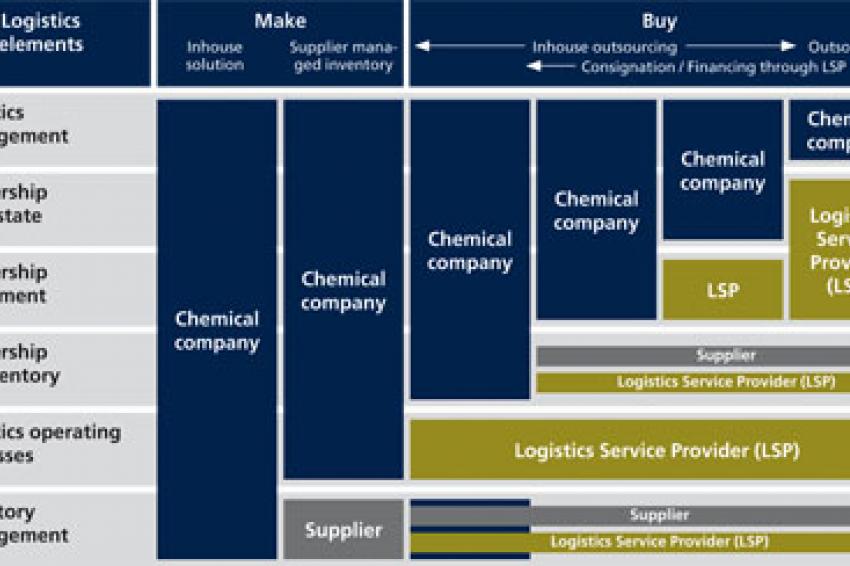Alternative Inventory Financing
Optimizing Cash-to-Cash-Cycle for Chemical Companies by Transferring Inventory Ownership
Many companies see their current inventory as too high and are interested in methods to increase liquidity. Methods and concepts of traditional inventory reduction have often been successfully applied, but pressure from the market and company shareholders still remains.
The adoption of inventory financing methods offers a means in which the position of all of the stakeholders may be strengthened, thus making the entire supply chain more robust. Although many warehouses have been strategically outsourced to logistics service providers (LSPs), logistically handling the customer's goods or even managing their inventory, financing of inventory remained responsibility of the customers.
As a consequence financing inventory through LSP can be considered as a next step towards a strong strategic collaboration to increase liquidity and reduce capital costs for the customer. The LSP increases customer retention. Nowadays, chemical companies expect more than just competitive prices. Logistics firms must be willing to demonstrate innovative strategic capabilities to win new customers or assure existing ones.
LSPs are interested in a long-term strategic relationship with their clients. This comes by providing the benefits expected by the customers, i.e. freeing capital tied up in inventory through the "bundling" of financial and logistics services.
Applying this financing method, the stakeholder with the best access to capital markets and lowest interest rates should finance the inventory over the longest possible time frame, while the other, beneficiary stakeholders proportionally compensate the financing stakeholder. Thus, the companies jointly optimize the cash-to-cash-cycle of the entire supply chain. Recently, forward-thinking LSPs have begun to embrace this model, providing capital and taking on inventory responsibility for partial supply chain legs and specific types of inventory focusing on procurement logistics but also considering financing of finished goods.
The LSP can offer a "bundled service package" to provide a value-added work flow approach for the other stakeholders, ot only building upon but adapting the vendor managed inventory model. The LSP consolidates the material flow towards the manufacturers or consumers, and reduces the activity to one interface. The ownership of the goods is transferred at the latest possible moment with the call-off of the goods by the manufacturer or consumer as in the case of classical consignment inventory.
Why Didn't this Financing Method Infiltrate Chemical Markets Faster?
The chemical industry is positioned at the beginning of the value chain. That's why the chemical companies are particularly affected by forecast errors and variations in demand (bullwhip effect). Furthermore they are confronted with high volatility of raw material prices. In the face of inventory risk companies build up safety stock which constantly ties up capital. This buffer conceals challenges to optimizing inventory in reference to service level agreements with customers. In contrast to the European automotive industry which was confronted with low prices by cost-sensitive competitors in the eighties of the last century the chemical industry was in the comfortable situation to cushion cost challenges by a pricing policy based on high quality and service requirements.
In the automotive industry successful companies identified innovative concepts especially in the field of supply chain management to react on this permanent cost pressure and made themselves to supply chain leaders. The chemical industry only started intensive supply chain cost initiatives in the last years. The combination of material flow issues and financial aspects is gradually increasing.
However chemical companies are less aware of the goals of LSPs and therefore find it difficult to engage them in supporting inventory financing.
Business Benefits and Key Success Factors of Inventory Financing
Based on the multitude of possible combinations arising from the changes in liquidity, capital costs, and balance sheet indicators, there are few standards. Each business situation needs a case-by-case evaluation.
Supply chain partners, already cooperating in this financing method agree on the fact that a pure window dressing objective based on optimizing balance sheet indicators is not sustainable. Collaboration should be based on the target to decrease administration and bad debts, increase inventory turnover, improve equity ratio and permanently keep capital costs low, at least neutral in terms of accounting. The combination which leads to an overall positive impact could be calculated thoroughly as a business case. This business case can be the basis for further discussions with potential partners and could be finally implemented as a successful project.
Successfully implemented financing projects are comprised in the following basic elements:
- An atmosphere of trust and cooperation between the collaboration partners
- Well-articulated and aligned goals that bring value for all of the partners
- Well-defined guidelines to drive the entire process from project setup, feasibility, partner selection through implementation and management
- A process to measure and evaluate the inventory financing project performance
An important success factor is the early recognition of project risks. The greatest risk associated with this financing method is located on LSP side: insolvency of the manufacturing partner.
Furthermore, with the implementation of a supply chain partnership, accounting policy changes could hamper refinancing efforts. Liability on goods could be a potential risk, but these risks could be avoided by contract negotiations.
Nevertheless, logistics and supply chain responsible persons in chemical companies have not yet understood the language of the financial world. Until now, only a few are able to express the chance of the financial strength of the supply chain for their companies.
Conclusion
Inventory financing through LSP offers an innovative alternative to conventional financing methods as an approach to reduce capital costs and improve cash flow. Prerequisites to initiating such a method is that all of the collaboration partners are aligned on the project goals and that the available options for such a project are rigorously analyzed.
Contact
Camelot Management Consultants AG
Theodor-Heuss-Anlage 12
68165 Mannheim
+49 621 86298 0
+49 621 86298 250







